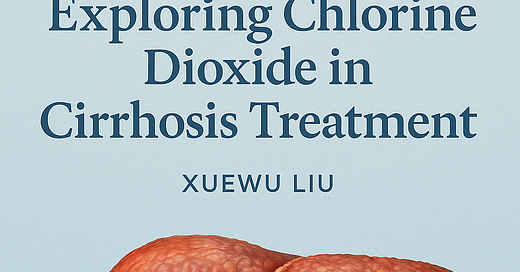Recently, a thoughtful subscriber commented on one of my Substack articles, asking whether chlorine dioxide could not only eliminate her son's liver tumor, but also help regenerate a cirrhotic liver caused by a Fontan procedure. This question prompted a broader exploration: could ClO₂ be used not just to treat cancer, but also to address the fibrotic landscape in which cancer often arises?
As the inventor of intratumoral chlorine dioxide (ClO₂) therapy, I've spent years studying its oxidizing properties, tumor-selective cytotoxicity, and unexpected benefits such as inflammation reduction and pain relief. But cirrhosis is not a tumor. It is a diffuse process of fibrosis, architectural distortion, and gradual loss of liver function. Can ClO₂ offer anything to this condition?
I believe it might—not as a cure, but as a tool to trigger regeneration.
Keep reading with a 7-day free trial
Subscribe to Xuewu Liu’s Substack to keep reading this post and get 7 days of free access to the full post archives.




